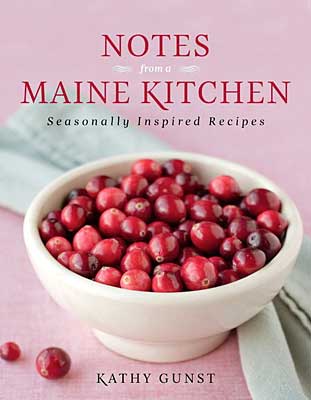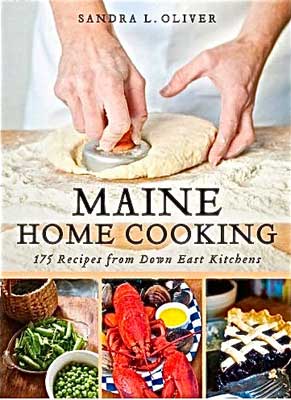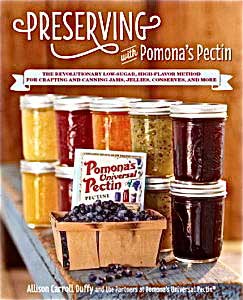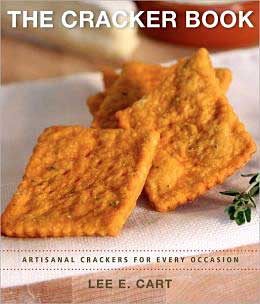 |
By Roberta Bailey
Even though my gardens could easily feed the entire neighborhood, I have been visiting farmers’ markets this summer and fall. I love to see what everyone is growing. I love to see the fruits of Maine’s farming community. I always leave with a lilt to my step, a big smile and a greater awareness of the worth of my home gardens. Local food is more expensive than imported supermarket produce.
Or is it?
In their 2005 paper, “Origins and evolution of the Western diet: health implications for the 21st century” (The American Journal of Clinical Nutrition; https://ajcn.nutrition.org/content/81/2/341.full), Loren Cordain and coworkers report that novel and processed foods that displaced minimally processed wild plant and animal foods that our hunter-gatherer ancestors ate have adversely affected our bodies’ glycemic load, fatty acid composition, macronutrient composition, micronutrient density, acid-base balance, sodium-potassium ratio and fiber content. “[D]iet-related chronic diseases represent the single largest cause of morbidity and mortality” in the United States and most Western countries, they say.
When we eat fresh, locally produced, organic foods, we may be saving money, nutrient for nutrient, by eating a healthier, more nutrient-dense diet and spending less on health care problems that come from eating highly processed foods or foods that have declined in nutrition as they were shipped from afar.
Here are four cookbooks by Maine authors that will inspire the seasoned gardener as well as the new locavore. Far better than the quick online search, paging through each of these books inspires and fires up the desire to cook creative and delicious dishes from the garden or farmers’ market. Something about holding the book, perusing the pages, was so comforting.
Notes from a Maine Kitchen – Seasonally Inspired Recipes, by Kathy Gunst (Down East Books, 2011, 196 pages, $27.95 hardcover)
Arranged by the month, each section begins with an incredibly well written essay that captures the mood of Maine in that month. Every recipe is inspiring, simple and delicious and features foods from Maine, sometimes seasoned with mangoes, ginger or other goodies from away. Recipes include Lobster and Mango Salad, Grilled Rhubarb, Maple Breakfast Corn Fritters, Ginger Shortcakes with Strawberries and Lemon Cream, and First-Harvest Pea and Lettuce Soup. I found myself reaching for the book on my noon break, just to read, to be taken in and comforted by tales of Maine life and food that I could actually make while farming.
 |
Maine Home Cooking – 175 Recipes from Down East Kitchens, by Sandra L. Oliver (Down East Books, 2012, 283 pages, $29.95 hardcover)
Sandra Oliver collected recipes from her Bangor Daily News column “Taste Buds” and elsewhere. The recipes use local, seasonal ingredients as well as ingredients commonly found in the kitchen. Many recipes include her tips and advise. From Baked Beans to Green Tomato Fajita Casserole, Crispy Kale Chips, and Curried Squash Apple Soup, classic Maine comfort food meets healthy local seasonal produce.
Preserving with Pomona’s Pectin – The Revolutionary Low-sugar, High-flavor Method for Crafting and Canning Jams, Jellies, Conserves, and More, by Allison Carroll Duffy and the Partners at Pomona’s Universal Pectin (Fair Winds Press, 2013, 176 pages, $21.99 paperback)
This book made me express a great sigh of relief. Finally – a collection of recipes and easy-to-follow, step-by-step, illustrated instructions for using the low methoxyl pectin that gels without sugar. The recipes rely on mono-calcium phosphate and the low methoxyl pectin to act as the thickening agents, so the cook can use less sugar, honey, maple sugar, stevia or just fruit. Recipes include the basic standards as well as Nana’s Favorite Dandelion Jelly, Pear Cranberry Conserve with Almonds and Crystallized Ginger, Basil-Mint-Plum Jam, Zucchini-Orange Marmalade, and Spiced Grape Preserves.
The Cracker Book – Artisanal Crackers for Every Occasion, by Lee E. Cart (Burford Books, 2012, 98 pages, $12.95 paperback)
This little volume is filled with more than 50 cracker recipes and a dozen recipes for dips to go with them. Many commercially available crackers contain unhealthful trans fats and are very expensive compared with the cost of the ingredients. Use fresh, local, nutty and delicious grains, seeds and flour to make your own crackers, surprisingly quickly and easily. Even with a busy farm schedule. Cart gives a basic recipe and a basic gluten-free recipe as foundations from which to launch one’s own recipes, as well as dozens of specific recipes. She talks about ingredients, thicknesses and shapes. Recipes include Sesame Seed and Brown Rice Crackers, Salsa and Cornmeal crackers, Orange and Buckwheat Crackers, Maple and Sage Crackers, and Dried Cranberry and Graham Crackers.
 |
Here are some recipes.
From Notes From a Maine Kitchen
Herb and Feta Corn Fritters
Makes 10 small fritters; serves 3 to 4
1/2 c. flour
1/2 tsp. baking powder
1/4 c. milk, plus 1 Tbsp. milk
1 large egg, lightly beaten
2 c. fresh corn kernels, cut off 2-3 cobs
2 Tbsp. finely chopped fresh herbs (basil, chives, rosemary, sage, oregano)
2 Tbsp. thinly sliced scallions, white and green parts
1/2 c. finely crumbled feta or goat cheese
salt and freshly ground pepper
3 Tbsp. olive, canola, grape seed oil or any combination
 |
In a large bowl, sift the flour and baking powder. Add the milk and whisk until smooth. Beat in the egg and gently mix in the corn, herbs, scallions, cheese, salt and pepper.
In a large skillet, heat the oil over moderately high heat. Drop 2 to 3 tablespoons of batter into the hot oil and cook 2 to 3 minutes on each side or until golden brown. Serve hot.
From Maine Home Cooking
Swiss Chard (and Sausage) Pie
If you leave out the sausage, you have a vegetarian dish.
Pastry for a two-crust pie
1 1/2 lbs. fresh chard or 3 c. cooked chard
1/2 lb. chorizo sausage (optional)
1 Tbsp. olive oil
1/2 c. chopped onion
3 cloves minced garlic
3/4 c. ricotta
2 eggs, beaten
1/2 c. Parmesan cheese
1/4 tsp. red pepper flakes
2 tsp. whole cumin seed, slightly toasted
salt and pepper to taste
Preheat the oven to 375 degrees. Trim your chard leaves by slicing out the ribs and setting aside to chop into 1/2-inch pieces while you steam the leafy portion. When the leaves are cooked, steam the rib pieces, then re-combine and squeeze firmly to remove excess moisture.
Remove the sausage from its casing and break it up into a large sauté or frying pan; brown the sausage and drain it. Put the olive oil in the pan, add the onion, and cook it over medium heat until it is soft. Add the chard and garlic and heat the chard through, stirring to allow moisture to evaporate. Combine by stirring the chard mixture with the cooked sausage, ricotta, eggs, Parmesan and seasonings. Mix well.
Line a 9-inch pie plate with a crust and put in the filling and then the top crust. Crimp to seal. Bake for 35 minutes.
From Preserving with Pomona’s Pectin
Spiced Pear-Cranberry Jam
2 lbs. fully ripe pears
12 oz. (1 bag) cranberries
3/4 c. water
1/2 tsp. cinnamon
1/4 tsp. nutmeg
1/4 tsp. ground ginger
1/4 c. lemon juice
4 tsp. calcium water (see below)
1 c. sugar (author’s note: Substitute 3/4 c. honey if desired)
3 tsp. Pomona’s pectin powder
Prepare your jars, lids and bands. Heat your canner and sterilize your jars.
Peel and core the pears, then mash the pears in a large bowl. Set aside.
Rinse the cranberries. Then combine them in a saucepan with 3/4 cup water. Bring to a boil over high heat, reduce heat, then simmer, covered, 10 minutes or until cranberries are soft and most have burst, stirring occasionally. Remove from heat and lightly mash cranberries.
Combine the cranberries and pears and mix well. Measure 4 cups and return it to the saucepan. Add the spices, lemon juice and calcium water and mix well.
In a separate bowl, combine the pectin and sugar (or honey). Mix thoroughly and set aside.
Bring the fruit mixture to a boil over high heat. Slowly add the pectin and sugar (or honey) mixture, stirring constantly. Stir 1-2 minutes to dissolve the pectin while the jam comes back to a boil. Once the jam boils, remove from the heat.
Calcium water: Combine 1/2 tsp. calcium powder with 1/2 c. water in a jar. This can be kept for later batches as well.
To can your jam, remove jars from canner and ladle jam into hot jars, leaving 1/4 inch of headspace. Remove trapped air bubbles, wipe the rims with a damp cloth and screw bands, tighten them to finger tight. Place jars in canner, return to a boil and process 10 minutes. Yield: 4-5 half-pints
From The Cracker Book
Basic Gluten-Free Crackers
Yield: approximately 24-30 2-inch circles
1/2 c. millet flour
1/2 c. white rice flour
1/4 c. almond meal
Flavorings and spices to blend or sprinkle on top
1/4 tsp. salt
2 Tbsp. olive oil
4 Tbsp. water
extra white rice flour for rolling
1. Blend together millet and rice flour, almond meal, seasonings and salt.
2. Add olive oil and water.
3. Blend together until a soft dough is formed.
4. Sprinkle rolling surface with white rice flour and roll dough to 1/8-inch thickness.
5. Cut dough into 2-inch circles.
6. Place dough on ungreased cookie sheets.
7. Re-form dough scraps into a ball, re-roll, and cut into circles until all dough is used.
8. Prick circles two or three times with a fork.
9. Bake at 350 degrees for 15-18 minutes or until golden brown on the bottom.
About the author: Roberta is our long-time recipe columnist. She lives and farms in Vassalboro.
